Have you ever noticed how a cat stretches when it wakes up or how a dog loosens its body after a nap? These animals don’t need a yoga class to stay flexible and healthy—they just do it naturally! Inspired by the way animals move, we have many yoga poses named after them. But you might wonder, “How do I do these poses correctly? Are they safe for me? Will they really help me feel better?”
Don’t worry! This blog will guide you through 10 fun and easy animal-inspired yoga poses. We’ll explain each pose clearly, so you can try them safely at home. Plus, we’ll share how these poses can help you feel more energetic and flexible. Whether you’re new to yoga or have some experience, these poses can be a great way to start your day with a boost of energy. So, let’s learn from our animal friends and get moving!
10 Yoga Poses with Animal’s Names
Here we have brought you ten yoga poses with animal’s names:
1. Marjariasana or Cat pose
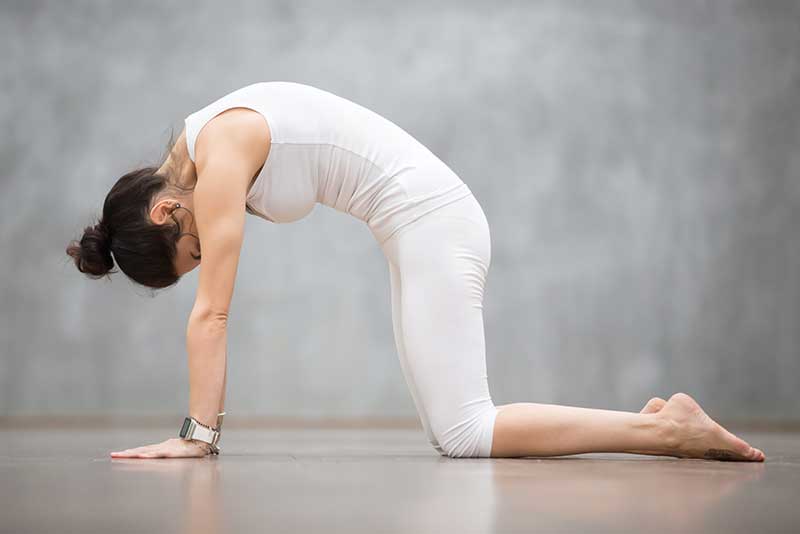
A cat is a very flexible animal, and by imitating its stretch pose, we get the Marjariasana. Marjari is a Sanskrit word which means cat. Marjariasana is a much-recommended warm-up pose, especially for beginners. All you need to do is stretch your body upwards like a cat and practice deep breathing to relax your body and make it flexible.
Benefits of cat pose:
- Increases circulation of spinal fluid
- Helps in cervical spondylosis
- According to research, Increases the flexibility of the spine
- Improves muscle health around the neck and shoulder region
2. Bhujangasana or Cobra pose
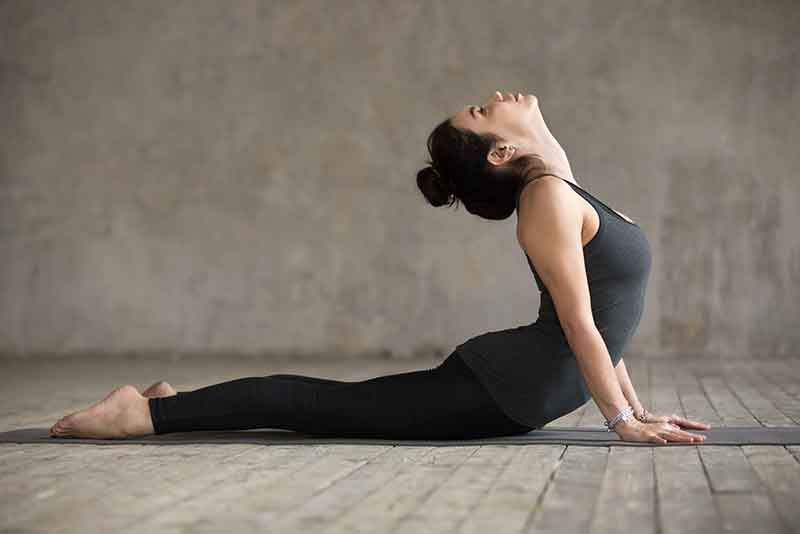
The first thing that comes into our minds after hearing the word cobra is fear. However, if you overcome the fear and notice a cobra, you will find the graceful pose of a cobra as it gently raises its hood to sense the environment. Bhujang means snake in Sanskrit, and if we raise our upper body while our stomach rests on the ground and try to imitate these creatures, we will get the cobra pose.
Benefits of cobra pose:
- According to research, Strengthens the lower back region
- Helps in relieving fatigue
- Stretches chest, stomach and shoulder
3. Adho Mukha Svanasana or Downward facing dog pose
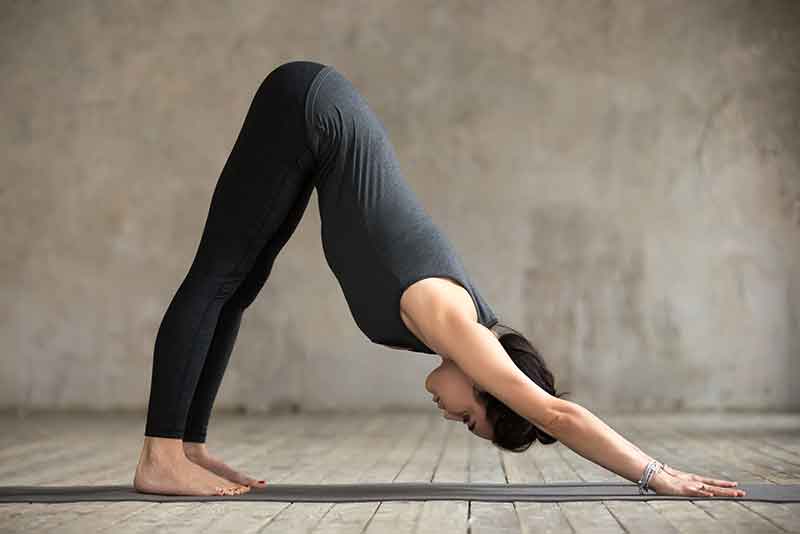
Shavana is a Sanskrit word which means dog. So our furry friends not only teach us love, loyalty and friendship but also a yoga pose. The downward-facing dog pose looks like a dog stretching its body on its four paws to feel relaxed.
Benefits of downward facing dog pose:
- Strengthens the whole body
- Helpful in hamstring
- Stimulates blood flow
- Calms our mind. If you’re interested in learning more about how yoga can help with mental health, check out our blog on Yoga for Depression.
4. Matsyasana or Fish pose
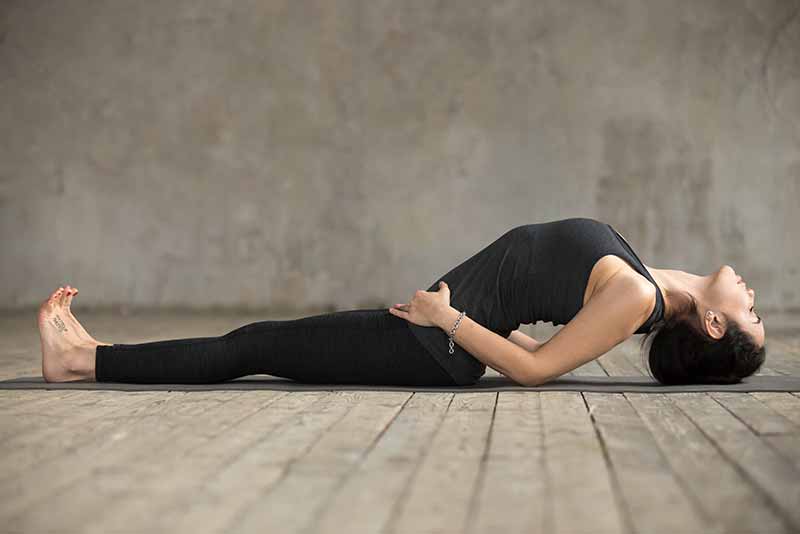
Matsaya in Sanskrit means fish. Matsaya holds a special place in Hindu culture, as it is believed that one of the ten avatars of lord Vishnu was Matsaya Avatar. Talking about the fish pose, you have to lay down on your back and stretch your spinal cord to perform this pose. However, if you do this yoga pose in water, you can float like a fish.
Benefits of fish pose:
- Relieves menstrual pain
- Good for the pelvic region
- Helps in relieving constipation
- Relieves tension in the neck and throat
5. Gomukhasana or Cow face pose
The cow face pose should not be confused with the cow pose. In this seated yoga pose, you must keep your back straight and hold your arms near your shoulders. With some imagination, you will notice that your sitting posture resembles a cow’s face.
Benefits of cow face pose:
- Strengthens the back
- Improves posture of the spine
- Strengthens legs and arms
6. Rajakapotasana or Pigeon pose

Also known as a hip opening yoga pose, the pigeon pose is among yogis’ most popular animal poses in yoga. While some find it challenging to perform, others ace it with perfection. However, the plus point is that it can be customized as per the yogis’ comfort and limits. This seated pose is done to relax the back and stretch the hips.
Benefits of pigeon pose:
- Increases flexibility
- Improves blood circulation
- Stretches upper legs
7. Ustrasana or Camel pose
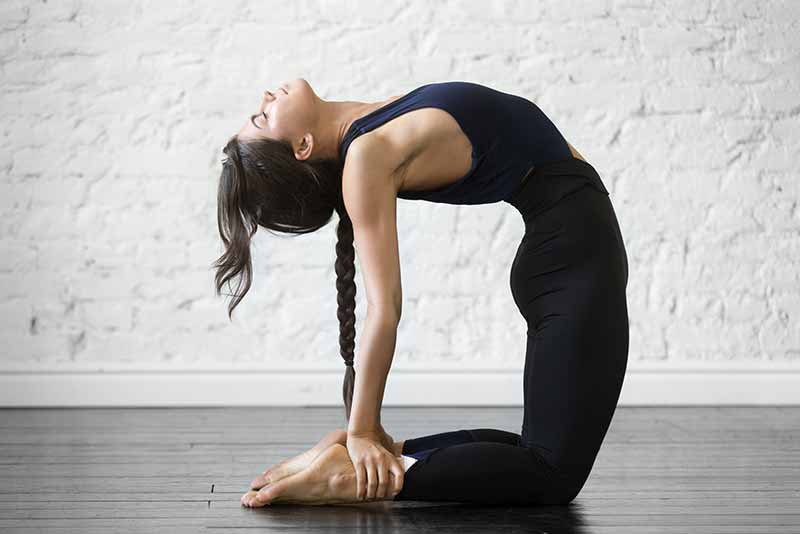
Ustra in Sanskrit means camel, and while performing this yoga pose, our back resembles the hump of a camel. Thus, this yoga pose gets its name. To do this pose, just try to do a backbend while resting your body on your legs and touching your feet with both hands.
Benefits of camel pose:
- Improves body posture
- Provides energy to your chakras
- Helps in reducing anxiety
- Useful in abdomen-related issues
8. Garudasana or Eagle pose
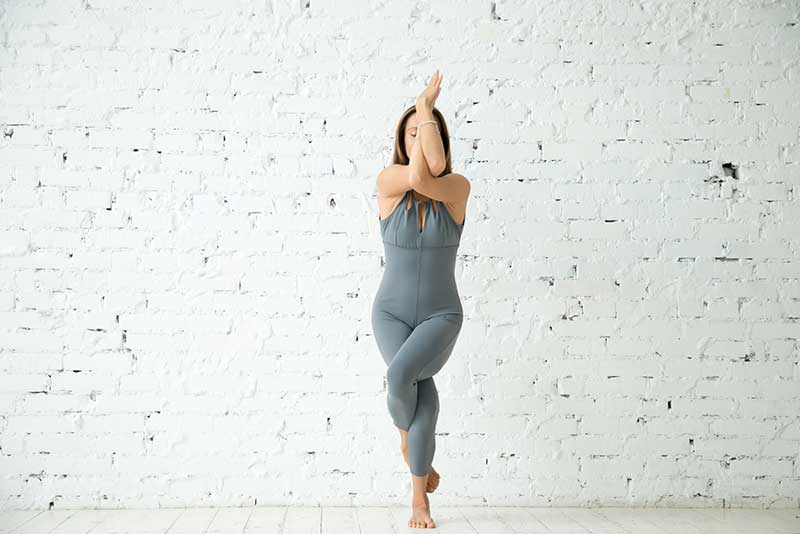
Garuda in Sanskrit means eagle. In this pose, we try to stand on one leg while the other is wrapped around it. Similarly, we keep our hands crossed over each other such that our palms look like an eagle’s beak.
Benefits of eagle pose:
- Increases focus and concentration
- Stretches hips
- Increases stamina
- Promotes deep breathing
9. Hanumanasana or Monkey pose
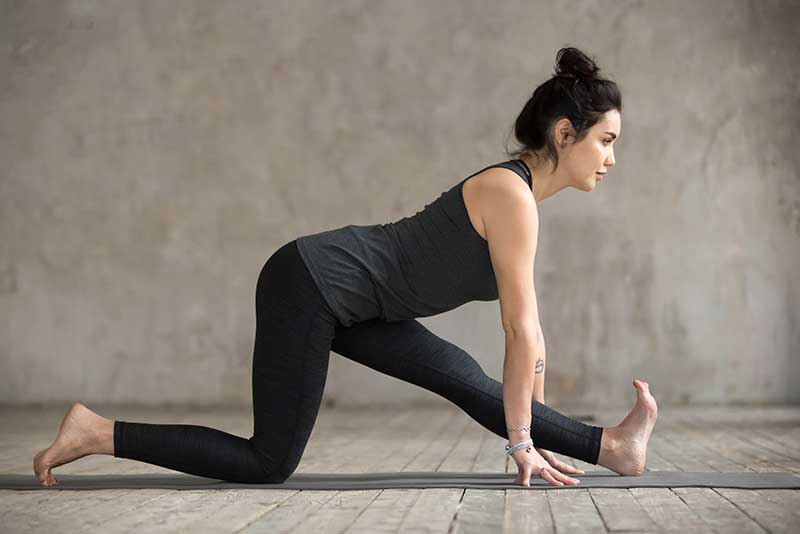
We all have tried to stretch our legs wide apart at least once, but not all of us succeeded. Well, in this yoga poses from animals named after monkey, you have to do something similar. Firstly, stretch your legs while keeping your back straight and hold your hands tightly. Then slowly extend your arms upwards.
Benefits of monkey pose:
- Strengthens spine
- Stretches hips
- Increases flexibility
10. Kakasana or Crow pose
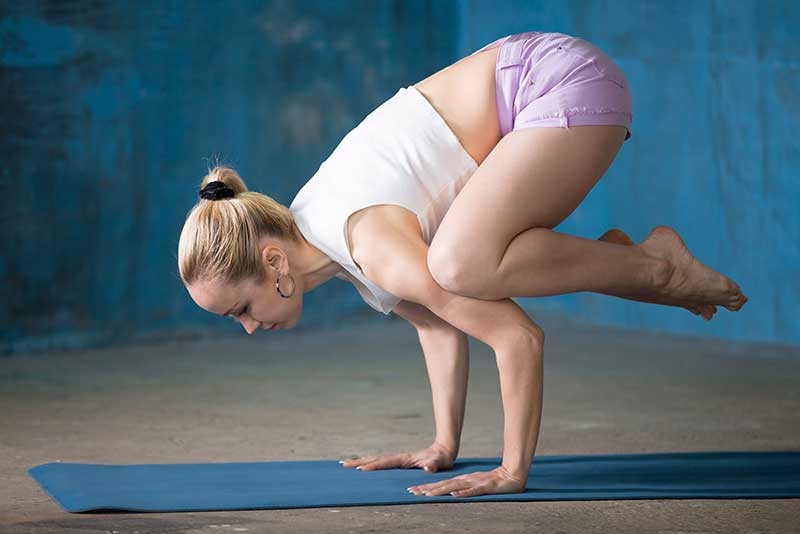
Crows are intelligent creatures that can easily solve complex problems with their smartness, but apart from that, these creatures also taught us the yoga pose, Kakasana. To do this yoga pose, squat with your feet apart and place your palms flat on the ground. Slowly, raise your toes and put all our weight on your hands while keeping your elbows bent. Try to maintain a balance, and you’ll see that you resemble a crow.
Benefits of crow pose:
- Improves wrist, forearm and ankle strength
- Increases focus and concentration
- Strengthens the upper back
- Improves sleep quality
Bottom line
Well, these were some popular yoga poses with animal names, and we hope you would love to try them at your home. For more yoga poses that can help with anxiety and depression, visit our blog on 8 Yoga Asanas for Anxiety and Depression Relief. So, perform these beneficial animal poses yoga and see how your body gets flexible and agile. In case of queries, please feel free to reach out to us at editor@yuvaap.com!
References
https://intapi.sciendo.com/pdf/10.1515/bhk-2016-0016
https://www.researchgate.net/publication/373076145_Importance_of_Bhujangasana_in_Daily_Life

Mr. Vijay Kumar Pandey is an eminent Yoga teacher with 15 years of experience. He excelled himself in Iyengar Yoga under the guidance of revered master BKS Iyengar Read More



